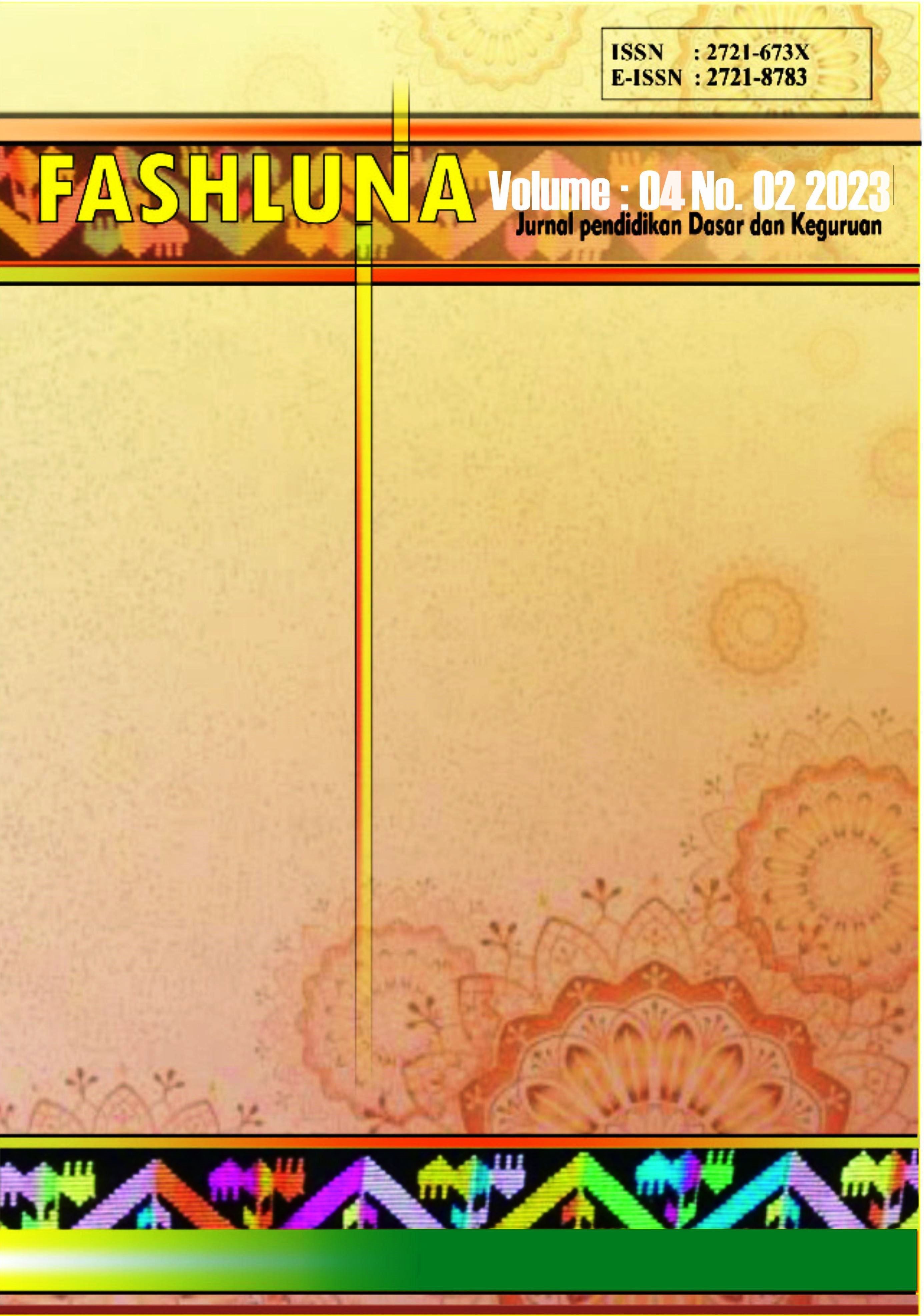EFEKTIVITAS PENGGUNAAN MEDIA AUDIO VISUAL TERHADAP HASIL BELAJAR SISWA PADA MATA PELAJARAN PENDIDIKAN AGAMA ISLAM DI SDN SIDOTOPO I/ 48
Abstract
This research is quantitative field research with an experimental approach, namely research used to find the effect of treatment on others under controlled conditions. This research aims to measure both classes between classes that were treated and those that were not treated, in this case the researcher used the experimental approach method "posttest only control design" using classes V A, B, C as the experimental class and class V F as the control class. The results of this research show that: (a) The quality of the variable learning outcomes for Islamic Religious Education and Character in the experimental class, namely the class taught using audio-visual media, is in the "Enough" category with the average obtained being 76 which is located in the interval 70– 79. (b) The quality of the learning outcomes variable for Islamic Religious Education and Character in the control class is in the "poor" category with an average of 68 located in the interval 61 – 69. (c) Results of hypothesis testing analysis in this study shows that for the hypothetical mean difference a sig value is obtained. = 0.645, because the sig value. = 0.645 ≥ 0.05, then H0 is accepted, meaning that the two average variances of learning outcomes for Islamic Religious Education and Character in the experimental and control classes are identical. Because the average variance in learning motivation for the experimental class and the control class is identical, the t-test is used to compare the averages between the experimental class and the control class. The results obtained were tcount= 2.034 > ttable= 1.68, this means that H0 was rejected, meaning that the average learning motivation of the experimental class was better than the average learning motivation of the control class. And H1 is accepted, this shows that there is a significant difference between the average student learning outcomes in the Islamic Religious Education and Characteristics subjects in the experimental class and the average student learning outcomes in the Islamic Religious Education and Characteristics subjects in the control class. It can be understood that audio visual learning media is more effective in improving the learning outcomes of class V students in the subjects of Islamic Religious Education and Character at SDN Sidotopo 1 48.
Downloads
References
Agustin, A., Husnianingtyas, A., Jatnika, W., & Aeni, A. (2022, April 27). Pengembangan Media Pembelajaran Aplikasi Yuk Wudu Untuk Meningkatkan Antusiasme Pembelajaran Pai Bab Wudu Di SD. FASHLUNA, 3(1), 44-52. https://doi.org/https://doi.org/10.47625/fashluna.v3i1.358
Azhar Arsyad. Media Pembelajaran. Jakarta: PT. RajaGrafindo Persada, 2013.
Bambang Warsita. Teknologi Pembelajaran, Landasan Dan Aplikasinya. Jakarta: PT. Rineka Cipta, 2008.
Chomaidi. Pendidikan Dan Pengajaran Strategu Pembelajaran Sekolah. Jakarta: PT Grasindo, 2018.
Damyati and Mudjiono. Belajar Dan Pembelajaran. Jakarta: Rineka cipta, 2006.
Hujair AH Sanaky. Media Pembelajaran Interaktif-Inovatif,. Yogyakarta: Kaukaba Dipantara, 2013.
M. Ilyas Ismail. Teknologi Pembelajaran Sebagai Media Pembelajaran. Cendekia Publisher, 2020.
Maskur, Ruhban, Nofrizal Nofrizal, and Muhamad Syazali. “Pengembangan Media Pembelajaran Matematika Dengan Macromedia Flash.” Al-Jabar : Jurnal Pendidikan Matematika 8, no. 2 (December 21, 2017): 177–86. https://doi.org/10.24042/ajpm.v8i2.2014.
M.Pd, Besse Qur’ani, S. Pd, Ninik rahayu ashadi S. Pd M.Pd, Dyah Vitalocca M.Pd ST, Andi Muhammad Taufik Ali M.Pd S. Pi, Nurhijrah M.Pd S Pd, Nuridayanti M.Pd S. Pd, Ir Labusab M.T S. Pd, et al. MEDIA PEMBELAJARAN KEJURUAN. Rizmedia Pustaka Indonesia, 2023.
Munir. Pembelajaran Jarak Jauh. Bandung: Alfabeta, 2012.
Nur Uhbiyanti, Abu Ahmadi. Ilmu Pendidikan. Jakarta: PT Rineka Cipta, 2019.
Nurrita, Teni. “PENGEMBANGAN MEDIA PEMBELAJARAN UNTUK MENINGKATKAN HASIL BELAJAR SISWA.” MISYKAT: Jurnal Ilmu-ilmu Al-Quran, Hadist, Syari’ah dan Tarbiyah 3, no. 1 (June 27, 2018): 171. https://doi.org/10.33511/misykat.v3n1.171.
Rudi Susilana & Cepi Riyana. MEDIA PEMBELAJARAN: Hakikat,Pengembangan,Pemanfaatan,dan Penilaian. Bandung: CV.Wacana Prima, n.d.
Rusman, Deni Kurniawan dan Cepi Riyana,. Pembelajaran Berbasis Teknologi Informasi Dan Komunikasi. Jakarta: RajaGrafindo Persada, 2013.
Satrianawati. Media dan Sumber Belajar. Yogyakarta: Deepublish, 2018.
Sugiyono,. Metode Penelitian Pendidikan. Bandung: Alfabeta, 2012.
Sugiyono. Metode Penelitian Pendidikan Pendekatan Kuantitatif, Kualitatif, Dan R&D. Bandung: Alfabeta, 2010.
Sukma, Denty Marga. “The Effect of Audio-Visual Media on The Students’ Participation in English Classroom.” Pancaran Pendidikan 7, no. 1 (February 1, 2018). https://doi.org/10.25037/pancaran.v7i1.129.
Syaiful Bahri Djamarah dan Aswan Zain,. Strategi Belajar Mengajar. Jakarta: Renika Cipta 2002, n.d.
“UNDANG-UNDANG REPUBLIK INDONESIA.” Accessed October 1, 2023. https://jdih.setkab.go.id/PUUdoc/7308/UU0202003.htm.
Copyright (c) 2023 Moh. Taufiq

This work is licensed under a Creative Commons Attribution-ShareAlike 4.0 International License.









